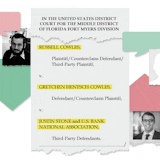The average flight today from Kennedy Airport to LAX is slower than it was in 1995 in every conceivable way. Planes face longer delays leaving the gate; take more time taxiing before taking off; and spend more time in the air.
But paradoxically, even with an average rise in travel time of 18 minutes, the percentage of flights on this route arriving after the scheduled arrival time has decreased. In 1995, the arrivals were behind schedule 51% of the time; today it’s just 37%.
Why do today’s flights arrive early more often, even though they’re slower? Airlines have extended their scheduled flight durations even more than the flights have lengthened in actual duration. The average scheduled duration from JFK to Los Angeles has increased 23 minutes since 1995, according to an New York Times analysis of Bureau of Transportation Statistics data.
Thanks to those more forgiving schedules, a majority of domestic flights nationwide arrive early or on time. If your plane reaches the gate at exactly the estimated arrival time, you are actually on a plane that is running slower than usual.
For airlines, scheduling the extra time has little downside, while it has the upside of looking good in on-time performance data and avoiding customer scorn.
“It’s called padding,” said Chad Kendall, a former commercial pilot and an associate professor of aviation at Metropolitan State University of Denver. He said airlines had plenty of incentives to be on time, especially on paper.
“The benchmark for performance set by the Department of Transportation is based on arriving within 15 minutes of your scheduled time of arrival,” he said. And airlines are protective of their reputation; business travelers in particular care about arriving on time.
When things go wrong, they go really wrong
It is less common now for flights to be moderately delayed. About 30% of flights last year were delayed by up to one hour, compared with over 45% three decades ago.


